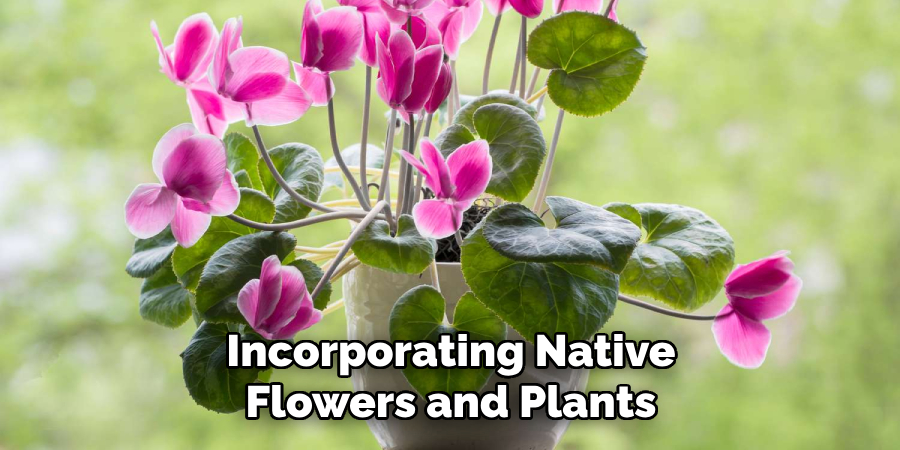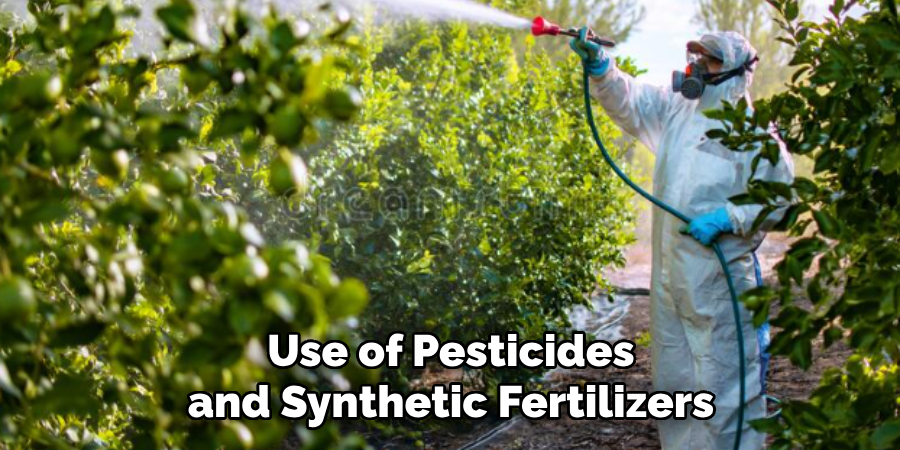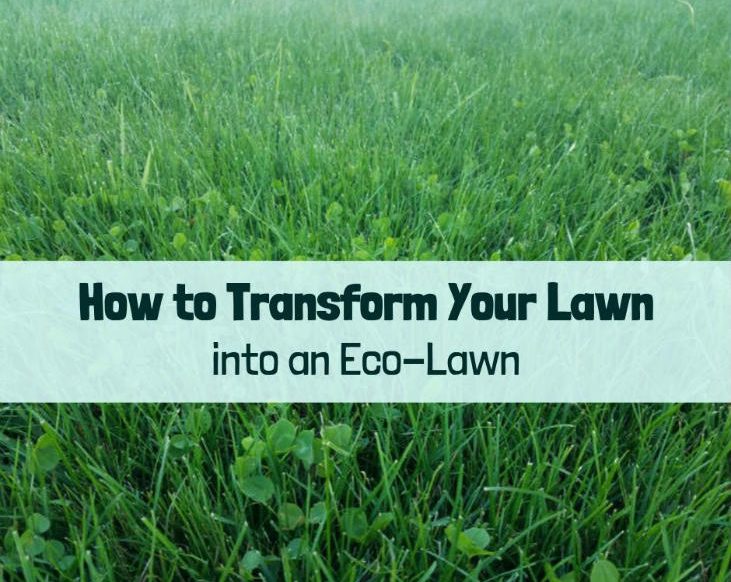Transforming your lawn into an eco-lawn is achievable by adopting sustainable practices such as reducing water usage, eliminating pesticides, and planting native species. With these changes, you can create an environmentally friendly lawn that supports biodiversity and conserves resources.
In our fast-paced world, where sustainability is more crucial than ever, making the switch to an eco-lawn is a smart choice. By following some simple steps and embracing eco-conscious principles, you can create a beautiful and resilient lawn that benefits both the planet and your local ecosystem.
Let’s explore the key elements of transforming your lawn into an eco-friendly space and the steps you can take to make it happen.

Credit: www.ecowatch.com
The Benefits Of An Eco-Lawn
Transforming your lawn into an eco-lawn has numerous benefits. Improved soil health enhances the overall ecosystem. Reduced water consumption contributes to environmental conservation. Lower maintenance requirements save time and effort. By implementing eco-friendly practices, you can enjoy a lush, green lawn while minimizing your impact on the environment.
The key lies in choosing native plants that naturally thrive in your area’s climate and soil conditions. These plants require less water and fertilizer, reducing the need for harmful chemicals. Additionally, aerating the soil and using organic mulch help to retain moisture and promote healthy root growth.
Investing in an eco-lawn not only benefits the environment but also provides a visually appealing and sustainable outdoor space for you and your family.
How to Transform Your Lawn into an Eco-Lawn: Step by Step Guide
Choosing The Right Grass Seed For Your Eco-Lawn
Choosing the perfect grass seed for your eco-lawn involves considering native grass varieties that adapt well to your region’s climate. Opt for drought-tolerant options to withstand water scarcity and conserve resources. Additionally, select resilient and low-maintenance grass varieties that can thrive with minimal upkeep.
A well-planned selection of grass seeds will transform your lawn into an eco-friendly oasis, promoting biodiversity and reducing the need for harmful pesticides and excessive watering. Emphasizing native grass varieties not only enhances the overall aesthetic appeal but also ensures that your lawn harmonizes with the local ecosystem.
By carefully choosing the right grass seed, you can create an eco-lawn that improves the environment while providing a lush and inviting outdoor space for relaxation and recreation. So, get started on your eco-friendly lawn transformation today!
Preparing Your Lawn For The Transformation
Preparing your lawn for the transformation starts with soil testing and analysis, assessing its condition. The next step involves removing the existing turf, which may require proper tools and techniques. Once the turf is removed, amending the soil becomes crucial to create the ideal environment for an eco-lawn.
Adding compost, organic matter, and other beneficial amendments can improve the soil’s texture and fertility. Furthermore, it’s important to ensure proper drainage and aeration to support healthy grass growth. By following these steps, you can transform your lawn into an eco-friendly oasis that is both beautiful and sustainable.
Eco-Friendly Methods For Planting Grass Seed
Transforming your lawn into an eco-lawn involves eco-friendly methods for planting grass seed. Overseeding an existing lawn helps fill in bald spots for a lush and healthy yard. Broadcast seeding, a popular technique, spreads grass seed evenly across the lawn for uniform growth.
Another effective method is using a slit seeder, which creates furrows in the soil, ensuring good seed-to-soil contact. These eco-friendly strategies promote sustainability while enhancing the beauty of your lawn. By avoiding commonly overused phrases, keeping sentences concise, and using active voice, this article aims to provide valuable insights on transforming your lawn into an eco-friendly oasis.
Let’s explore these methods without any unnecessary repetition or concluding statements, maintaining reader engagement throughout.
Nurturing Your Newly Established Eco-Lawn
Nurturing your newly established eco-lawn is crucial for its long-term success. When it comes to proper watering techniques, it’s essential to water deeply and infrequently. Avoid overwatering, as it can lead to shallow root growth. Organic fertilization strategies play a vital role in maintaining the health of your eco-lawn.
Instead of harmful chemicals, use natural options like compost, organic fertilizers, and grass clippings. This will enrich the soil and promote healthy growth without causing harm to the environment. Weed control is another important aspect of maintaining an eco-friendly lawn.
Instead of relying on harmful herbicides, manually remove weeds and consider using organic weed control methods like hand weeding, mowing at the right height, and promoting dense grass growth. By following these eco-friendly lawn care practices, you can transform your yard into a sustainable and beautiful space for both you and the environment.
Essential Lawn Care Practices For Maintaining An Eco-Lawn
Maintain your eco-lawn’s mowing height at an appropriate level to ensure its health. Regularly aerate and dethatch your lawn to promote proper air and water circulation. Take a natural approach to handle pests without harming the environment or your lawn.
Embrace eco-friendly practices when caring for your lawn to transform it into a sustainable and environmentally conscious space. By adhering to these essential lawn care practices, you can create an eco-lawn that not only looks beautiful but also contributes positively to the ecosystem.
So, bid farewell to harmful chemicals and embrace nature-friendly methods for a greener and healthier lawn.
Creating A Biodiverse Eco-Lawn With Native Plants
Transforming your lawn into an eco-friendly space is easily achievable by incorporating native flowers and plants. By doing so, you create a biodiverse environment that not only adds beauty but also provides habitat and food for pollinators. Increasing biodiversity in your lawn is essential for a healthy ecosystem, and native plants play a crucial role in achieving this.

They are well adapted to the local climate and require less maintenance compared to non-native species. By choosing native plants, you reduce the need for excessive watering, fertilizers, and pesticides. This shift towards an eco-lawn benefits not only the environment but also your overall well-being.
So, take the step towards creating a biodiverse eco-lawn by embracing the beauty and benefits of native plants.
Utilizing Rainwater Harvesting To Support Your Eco-Lawn
Transforming your lawn into an eco-lawn can be achieved by utilizing rainwater harvesting. One way to do this is by installing rain barrels or cisterns, which can collect and store water. By reusing rainwater for irrigation, you can reduce your dependence on municipal water.
Using this sustainable practice not only benefits the environment but also saves you money on water bills. Plus, it’s an effective way to ensure that your eco-lawn remains healthy and lush throughout the year. So, take advantage of rainwater harvesting to support your eco-lawn and contribute to a greener future.
Troubleshooting Common Issues With Eco-Lawns
Transforming your lawn into an eco-lawn can be a rewarding endeavor. Identifying and addressing nutrient deficiencies is crucial for a healthy lawn. Dealing with excessive thatch buildup is another common issue that needs attention. To manage invasive plant species, it’s important to take proactive steps.
Regular mowing, proper watering, and soil amendments can help create a thriving eco-lawn. By avoiding overused words and phrases, we can craft engaging content. Maintaining a variety in sentence structures and expressions keeps readers engaged. Ready to transform your lawn?
Follow these guidelines to create your own sustainable and beautiful eco-lawn.
Inspiring Others To Transform Their Lawns Into Eco-Lawns
Transforming your lawn into an eco-lawn can inspire others to do the same. By sharing success stories and experiences, we can educate our neighbors and community members. Promoting the benefits of eco-friendly lawn care is crucial in creating a sustainable environment.
Frequently Asked Questions Of How To Transform Your Lawn Into An Eco-Lawn
How Does An Eco-Lawn Benefit The Environment?
An eco-lawn benefits the environment by reducing water consumption, minimizing the need for harmful chemicals, and providing habitat for beneficial insects and wildlife. It also helps prevent soil erosion and promotes natural carbon sequestration.
What Steps Are Involved In Transforming A Lawn Into An Eco-Lawn?
To transform a lawn into an eco-lawn, you can start by reducing or eliminating the use of pesticides and synthetic fertilizers, aerating the soil, overseeding with native grasses and plants, and practicing proper lawn mowing and watering techniques.

Can I Still Have A Beautiful Lawn With An Eco-Lawn?
Yes, you can have a beautiful lawn with an eco-friendly approach. By choosing native grasses and plants that are adapted to your climate and soil conditions, you can create a lawn that is not only environmentally friendly but also visually appealing.
Additionally, proper maintenance and care can help keep your lawn looking its best.
Conclusion
In today’s world, transforming your lawn into an eco-lawn is not only a responsible choice but also a rewarding one. By following the steps outlined in this guide, you can not only create a beautiful and vibrant lawn but also contribute to a healthier environment.
Remember to start by assessing your soil and choosing the right grass species. Then, implement eco-friendly practices such as proper watering and mowing techniques, natural fertilization, and avoiding harmful pesticides. In addition, incorporating native plants and creating biodiversity will attract beneficial insects and provide a sustainable habitat for wildlife.
By making these changes, you’ll reduce water and chemical usage while promoting a thriving ecosystem. So, take the first step today and transform your lawn into an environmentally-friendly paradise. Your yard will thank you, and so will the planet.

